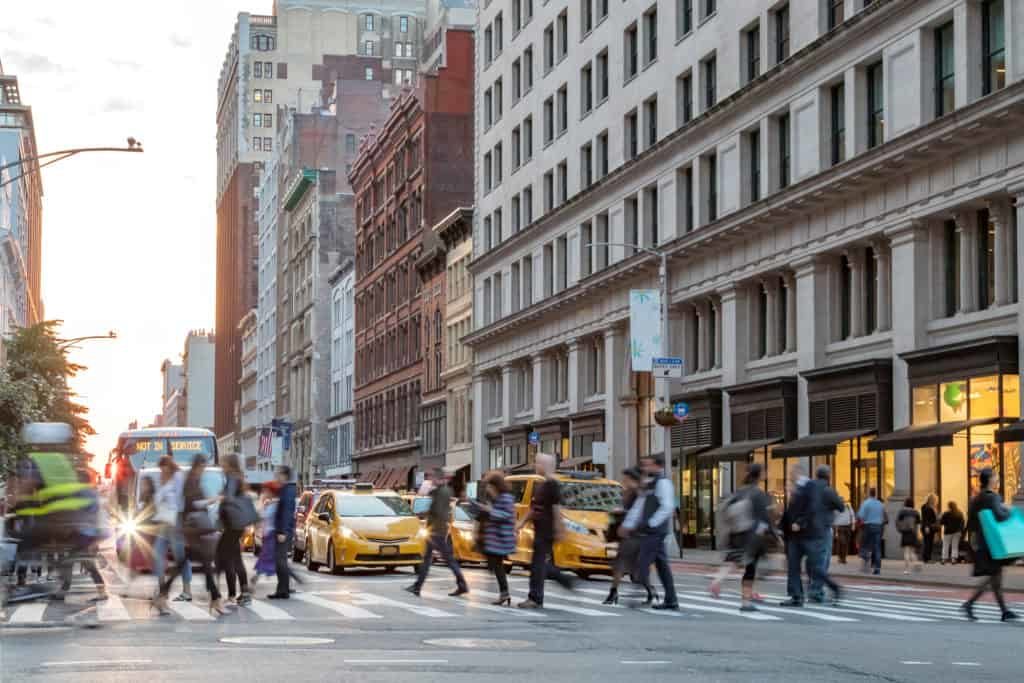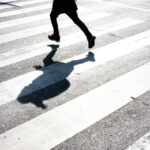New York City has seen many changes because of the coronavirus outbreak. One of the major changes is in how people move throughout the city.
Before the COVID-19 shutdown, the streets of New York City were crowded with cars, city buses, and taxi cabs. Trains and subways were packed with commuters at all hours of the day and night. However, the virus has forced people to find other means of transportation.
The use of bicycles throughout NYC has increased substantially since the outbreak of the virus. People in the city are using bicycles to commute to work or run essential errands, instead of using public transportation. Citi Bike, a bike-sharing program in NYC, reported a 67 percent increase in the use of its service in March.
In March, Mayor de Blasio announced that the city would be adding temporary protected bike lanes in Brooklyn and Manhattan to increase the safety of cyclists. An additional 9.2 miles of protected bicycle lanes were announced for Brooklyn, Queens, and Manhattan.
Protected Bicycle Lanes in New York City
New York City installed protected bicycle lanes throughout the city to improve safety, increase mobility, and improve the economic vitality and quality of life for residents. At the beginning of 2020, before the COVID-19 outbreak, the city announced additional projects for protected bicycle lanes throughout Brooklyn. The plan was to create more than 30 miles of protected bicycle lanes in the city during 2020.
The COVID-19 shutdown has allowed New York City and cities throughout the world to add bicycle lanes and expand bike lanes quickly and efficiently. Without the crowds and traffic on the street, cities like NYC can construct additional cycling lanes without the cost or trouble of shutting down traffic.
The need to improve safety and accommodate increases in cycling during the pandemic was evident. Bicycling injuries increased 43 percent in just a week in the beginning of March.
The Need for Safe Infrastructure to Protect Bicyclists
Cycling has increased in popularity in many cities throughout the United States. Many people view cycling as a healthy form of exercise or a way to socialize with family and friends. Other people view cycling as an inexpensive, environmentally friendly alternative form of transportation.
Regardless of the reasons why people choose to ride bicycles, cities like New York City have seen an increase in the use of bicycles. For that reason, many cities like NYC have instituted projects to increase bicycle safety, including adding dedicated cycling lanes and improving infrastructure.
However, that may not be enough to protect bicyclists. Additional steps need to be taken to reduce the risk of injury from bicycle accidents involving motor vehicles.
Bicycle fatalities were 6.3 percent higher in 2018 compared to 2017. An estimated 47,000 cyclists were injured in traffic accidents during 2018.
Bicyclists are at high risk for severe injuries and death when they are involved in a bicycle accident with a vehicle. Bicycle helmets and other protective gear do not offer the level of protection a person has inside a vehicle in a crash.
A cyclist’s body receives the full impact of a collision when struck by a motor vehicle. There is no metal frame, airbags, or seatbelts to protect a bicyclist in a traffic accident. Therefore, bicycle accident injuries tend to be severe.
A bicyclist struck by a motor vehicle can sustain multiple life-threatening and catastrophic injuries including:
- Traumatic brain injuries and skull fractures
- Multiple broken bones and fractures
- Crushing injuries, including internal organ damage
- Loss of limbs
- Scarring and disfigurement
- Back and spinal cord injuries
- Neck and shoulder injuries
In some cases, a bicyclist sustains permanent disabilities and impairments from a bicycle accident. The cyclist may return to work, but his earning potential decreases because of a permanent impairment. A disability can result in a decrease in a person’s quality of life after a bicycle accident.
Bicycle advocacy groups around the United States argue for the need for additional protected bicycle lanes and improved infrastructure to reduce the number of bicycle accidents and injuries. Cyclists are on the front lines of the effort. They witness firsthand how dangerous it can be to ride a bicycle through crowded streets in New York City and other large, urban areas.
Do the Benefits of Bicycling Outweigh the Risk?
For many cyclists, the benefits of riding a bicycle are much higher than the risks of riding a bicycle. The health benefits of bicycling are well-known. Cycling can improve and maintain overall health.
However, bicycling also provides emotional and social benefits. Riding a bicycle also protects the environment and has economic benefits for the cyclist.
As traffic returns to the streets after the COVID-19 shutdown ends, bicyclists will again face risks from motorists. Hopefully, cities will continue the efforts to improve bicycle safety that they began during the coronavirus outbreak.


